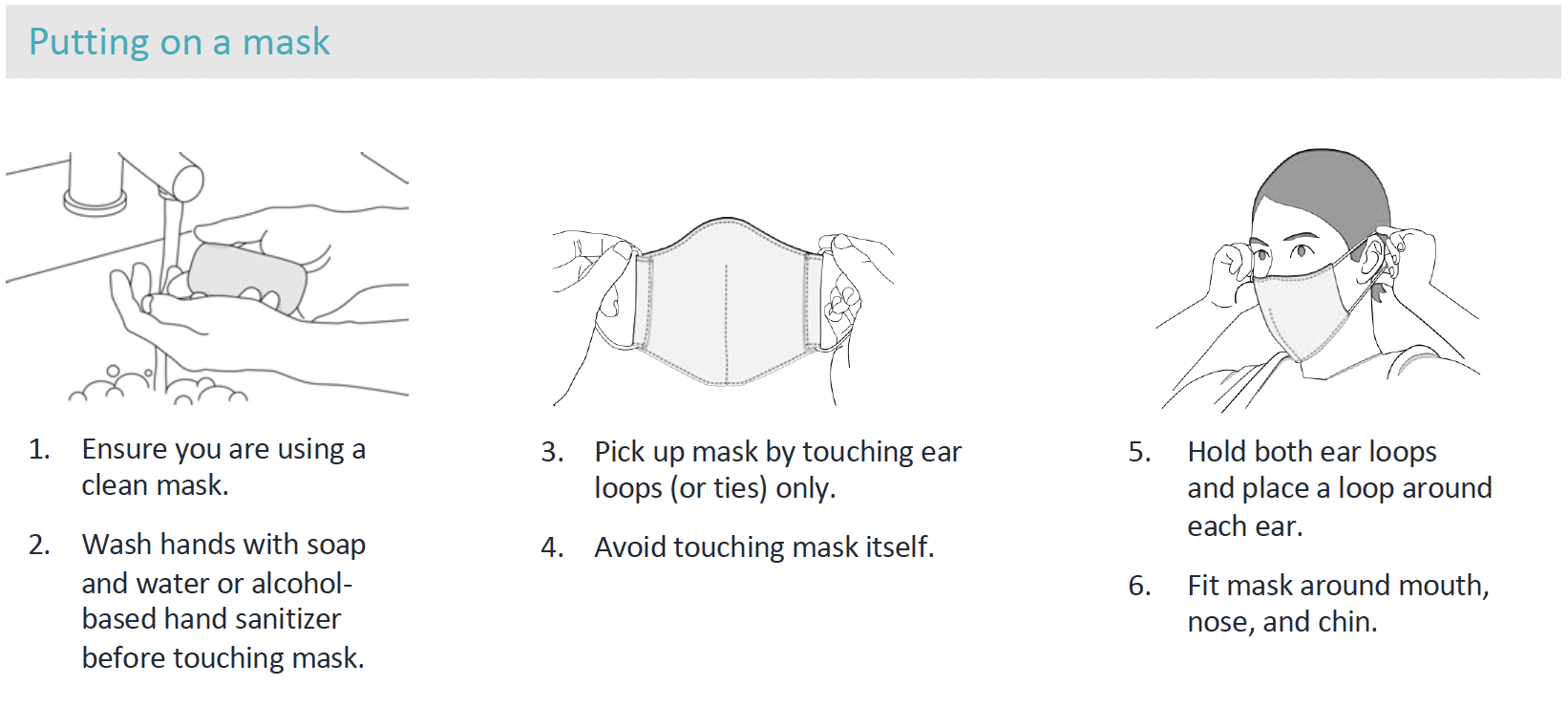
How to Make a Cloth Mask Cover
Download the Face Mask Cover Guidelines and Patterns
Face mask covers need to filter out particles but still be easy to breathe through. Experts recommend using 100 percent cotton fabrics or cotton blend fabrics.

How to Use a Cloth Mask Cover
To make sure your mask cover is sterile, you need to clean it properly. You also need to be careful how you put it on and take it off.
You Know the Drill—Wash Your Hands!
Remember that social (or physical) distancing, washing your hands, and staying home if you are sick are the best ways to help slow the spread of coronavirus.
Wearing and using homemade cloth face mask covers is another way you members can help support our health. As we work together as a community, we can help prevent the spread of COVID-19.
